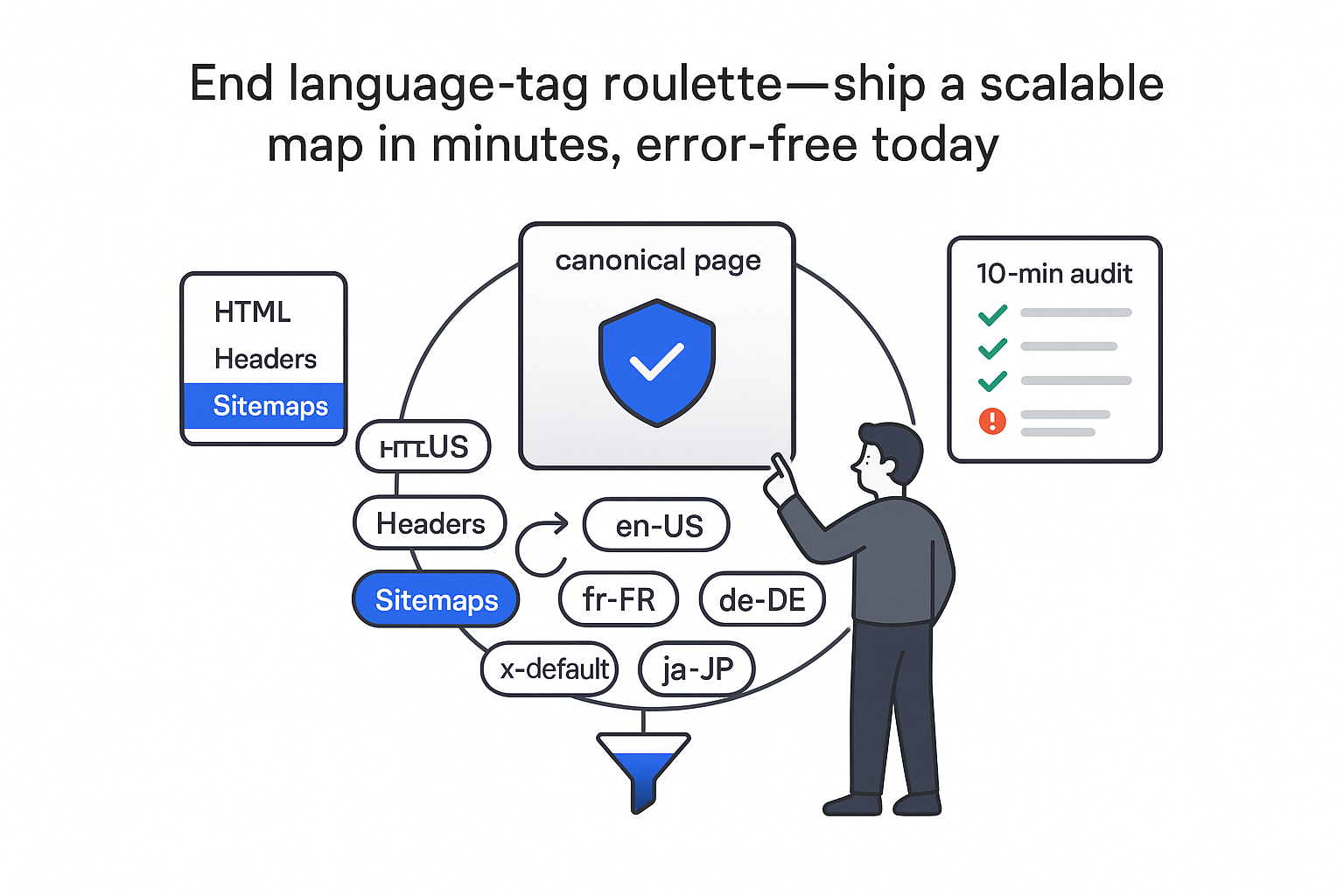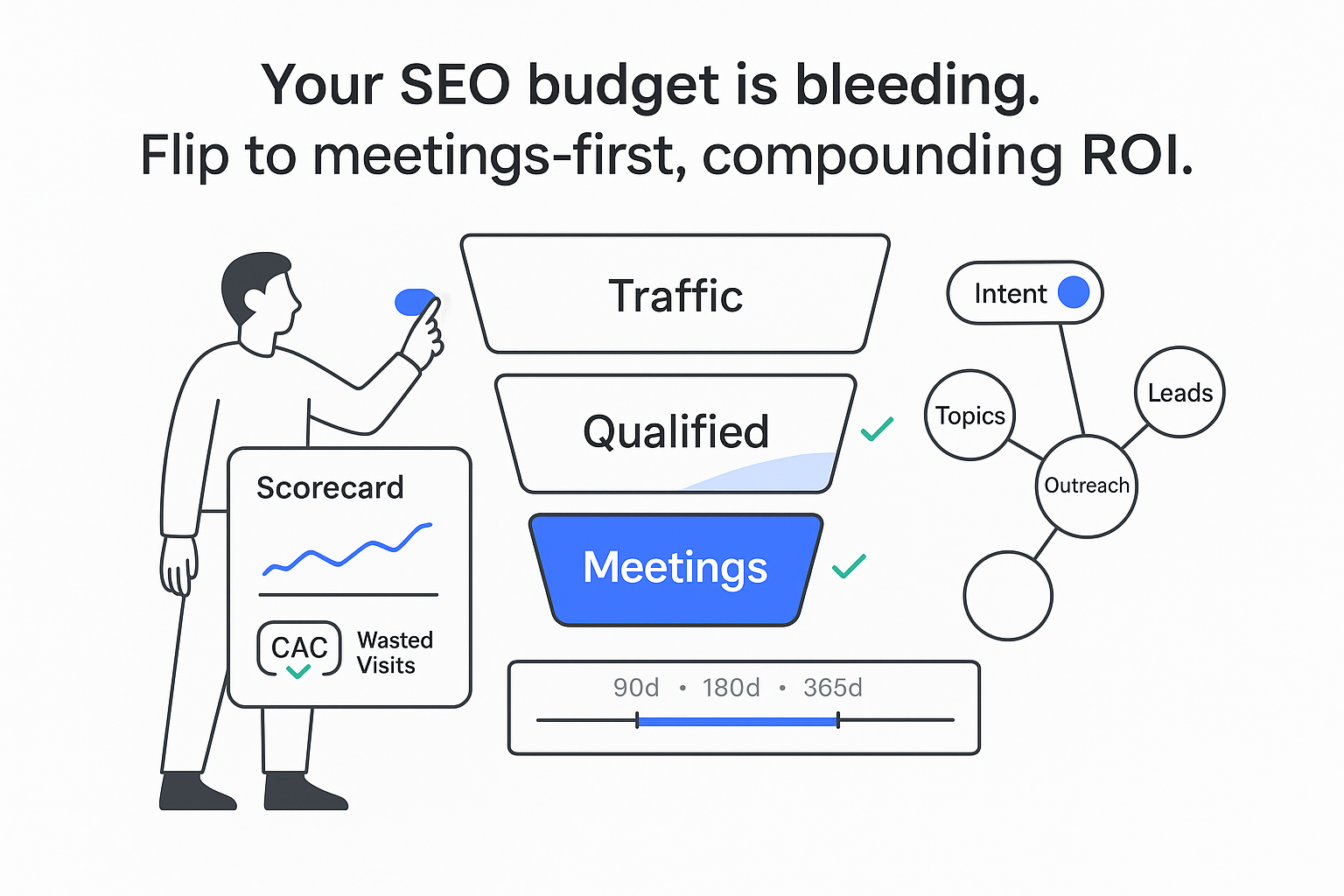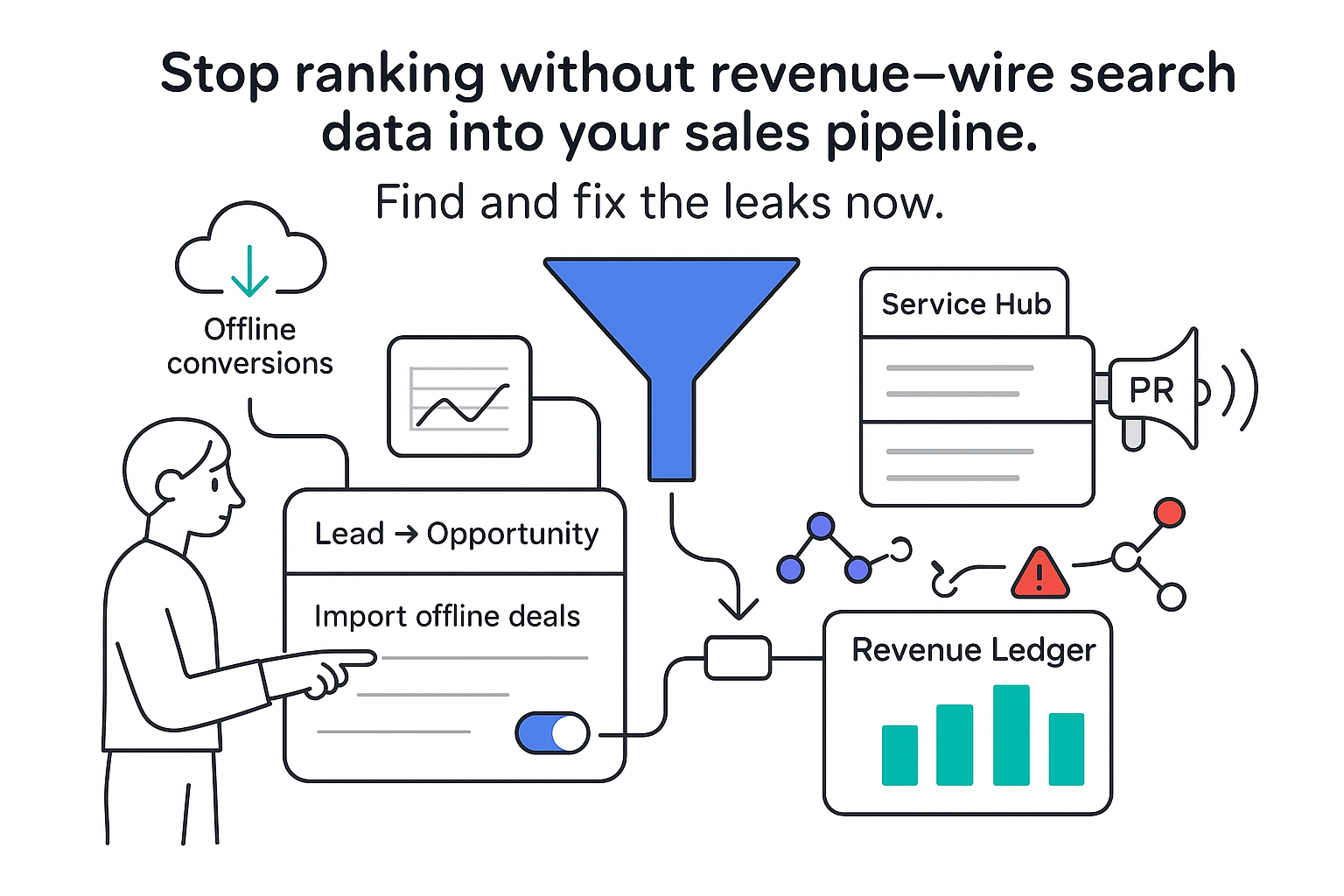If I run a B2B service business across multiple markets, I want the right prospects to land on the right version of my content. That is where hreflang tags save time and cut confusion. They steer search engines toward the correct language or region page, which means better user experience and cleaner data. The idea feels technical at first, yet the mechanics are straightforward once I apply a consistent pattern. I will get a clean implementation in place, then layer in the finer points that keep it stable at scale.
Implement hreflang without the guesswork
My quick setup looks like this: I map each canonical page to its translated and localized counterparts, use the correct language or region codes, make links reciprocal, include a self-reference, and add x-default for a neutral fallback (often a global or chooser page). That gives me a working cluster for every concept on my site.
Decision tree: use HTML tags when I can edit the head and have a manageable number of locales. Use HTTP headers for non-HTML assets like PDFs where I cannot touch the head. Prefer XML sitemaps when I run many locales or large catalogs and want one central source of truth.
Map pages and choose the right codes
I start with my canonical URL list. For each URL, I list every translated or localized version. I standardize protocols and trailing slashes, confirm each final URL returns 200 and is indexable, and keep the page concept aligned across markets - copy, units, currency, and examples can differ, but the purpose should match.
For codes, I stick to standards:
- Language only: en, fr, de, es, ja, ar. Full ISO 639-1 codes are listed here.
- Language plus region: en-GB, en-US, fr-CA, pt-BR, es-MX, de-AT. See the ISO 3166-1 alpha-2 country code full list.
- Use a hyphen, not an underscore; keep language lowercase and region uppercase (en-GB, not en-gb or en_GB).
- Script subtags are allowed where needed (for example, zh-Hans or zh-Hant, optionally with region).
- Avoid invented or incorrect codes (en-UK is wrong - use en-GB).
Every page must list itself and all alternates - bidirectional and self-referential. When I add a new market, I update the entire cluster. For x-default, I point to a neutral page; I do not use it to force traffic to a specific market unless that truly is my fallback. For clarity on how hreflang differs from language declarations, see the W3C note on the content-language HTML attribute.
HTML implementation that holds up
HTML is the fastest path for most sites. I add tags inside the head - one link element per alternate - and keep a self-referencing canonical tag present.
Language only example
<link rel="canonical" href="https://example.com/consulting/" />
<link rel="alternate" hreflang="en" href="https://example.com/consulting/" />
<link rel="alternate" hreflang="fr" href="https://example.com/fr/consulting/" />
<link rel="alternate" hreflang="es" href="https://example.com/es/consulting/" />
<link rel="alternate" hreflang="x-default" href="https://example.com/global/consulting/" />Language plus region example
<link rel="canonical" href="https://example.com/consulting/" />
<link rel="alternate" hreflang="en" href="https://example.com/consulting/" />
<link rel="alternate" hreflang="en-GB" href="https://example.co.uk/consulting/" />
<link rel="alternate" hreflang="en-US" href="https://example.com/us/consulting/" />
<link rel="alternate" hreflang="fr" href="https://example.com/fr/consulting/" />
<link rel="alternate" hreflang="x-default" href="https://example.com/global/consulting/" />I place tags in the head (not the body) and render them server-side, not via client-side injection. Every page in the group includes the same set of alternates, including x-default. I keep one canonical per page and make it self-referential. Hreflang works across domains, subdomains, and folders - consistency and reciprocity matter more than structure.
Headers and sitemaps for special cases
For non-HTML assets, I use HTTP headers and make sure my server or CDN preserves multiple Link headers.
Example Link headers
Link: <https://example.com/whitepaper.pdf>; rel="alternate"; hreflang="en"
Link: <https://example.com/fr/whitepaper.pdf>; rel="alternate"; hreflang="fr"
Link: <https://example.com/global/whitepaper.pdf>; rel="alternate"; hreflang="x-default"On large sites, I prefer XML sitemaps. I include the xhtml namespace and list every alternate per URL. If locales live on different hosts, each host should be verified in the relevant search engine console - for Google, use Google Search Console. I can also split by host and reference all sitemaps from a sitemap index.
Namespace and per URL example
<?xml version="1.0" encoding="UTF-8"?>
<urlset xmlns="http://www.sitemaps.org/schemas/sitemap/0.9"
xmlns:xhtml="http://www.w3.org/1999/xhtml">
<url>
<loc>https://example.com/consulting/</loc>
<xhtml:link rel="alternate" hreflang="en" href="https://example.com/consulting/"/>
<xhtml:link rel="alternate" hreflang="en-GB" href="https://example.co.uk/consulting/"/>
<xhtml:link rel="alternate" hreflang="fr" href="https://example.com/fr/consulting/"/>
<xhtml:link rel="alternate" hreflang="x-default" href="https://example.com/global/consulting/"/>
</url>
</urlset>I validate XML syntax and namespaces and rebuild the sitemap whenever I add or remove locales. After a release, I submit the updated sitemap for recrawl to prompt fresher indexing.
What hreflang actually signals
Hreflang pairs pages that share meaning but differ by language or region. Search engines use it to decide which version to show a user - it is a strong routing hint, not a hard rule. Other signals like canonical conflicts, redirects, or blocked resources can override it. See Google’s guidance on localized versions for how it chooses which of your web page’s different (but often similar) versions to show. Yandex supports hreflang. Bing relies on other signals, per its official documentation and what Microsoft’s Fabrice Canel says. For more on why canonicalization can override hreflang, see a primer on the ~40 canonicalization signals.
Two targeting models matter:
- Language targeting (fr) shows the French version to users who prefer French.
- Language plus region (en-GB) points UK users or UK-locale browsers to UK content.
The rules that keep my clusters clean are simple: self-reference, reciprocity, and a neutral x-default when nothing else matches.
International SEO impact and what I monitor
For B2B service companies that sell across borders, hreflang is simple insurance. It prevents the awkward moment when a UK buyer lands on a US page with dollar pricing, reduces bounces, and improves the odds that a qualified visitor sees copy that speaks their language and market. It also helps crawlers interpret closely related content across markets as intentional variants rather than duplicates.
A small metric box to watch: impressions and clicks by country, conversion rate by language or market, incorrect rankings reduced, and average time on page by market. Expect lower bounce rate and stronger engagement such as higher dwell time when routing improves.
One caveat: hreflang does not make weak pages win. If the content is thin or uncompetitive, hreflang will not fix that - it simply routes qualified traffic to the best-matching version of what already exists.
Hreflang versus canonical: keep them in sync
Canonical tags declare the preferred source among duplicates; hreflang declares alternates by language or region. They coexist without conflict when I follow two guardrails: each locale uses a self-referencing canonical, and I never canonicalize one locale to another. If I canonicalize en-GB to en-US, I collapse the UK page out of the index and break the cluster. For more context, see Google’s documentation that states how to specify your language or region alternatives and recommends using x-default.
Edge cases that deserve care
- Near-identical en and en-GB pages: keep both, use self canonicals, connect them with hreflang.
- Parameterized URLs: prefer clean, stable URLs per market; if parameters are unavoidable, confirm each target is indexable and returns 200.
- Pagination: pair page 2 with page 2 across locales (and so on), not everything back to page 1.
- Geolocation: avoid hard IP redirects that trap users or bots - let every locale URL load and offer a prominent switcher instead. Google says to avoid automatic redirection. Do not risk cloaking, and avoid intrusive interstitial flows.
Audit and troubleshoot quickly
Ten-minute sanity test
- Pick three pages from one cluster (for example, en, en-GB, fr) and view source. Confirm hreflang exists in the head and includes self, all alternates, and x-default.
- Click each href and check final status 200, no redirect chains, and the correct market content.
- Inspect headers for conflicts (no accidental noindex or mismatched canonicals).
- If using sitemaps, validate the XML and namespaces; confirm every href listed there matches the live page.
- Submit the updated sitemap for recrawl and monitor performance by country afterward. For page-level checks, use the GSC URL inspection tool.

Common errors that cause mismatches
- Wrong codes or case (en-UK, sp instead of es, en_gb) - use ISO codes with the correct hyphen and case.
- Links to redirects, 404s, or non-indexable targets.
- Mixed protocols or hosts within the same cluster (http or https, www or bare) without consistency.
- JavaScript-injected tags that never appear in the crawler’s rendered HTML.
- Missing reciprocity or missing self-references that fragment the cluster.
A final thought: hreflang is not fancy; it is steady. When I implement it cleanly, keep it reciprocal, and verify it after each release, my international content stays tidy and the right people land on the right page - yielding clearer data, fewer mismatches, and a smoother path from search to sales conversation. For more depth, see Google’s overview of localized versions and this concise explanation in this video.







.svg)